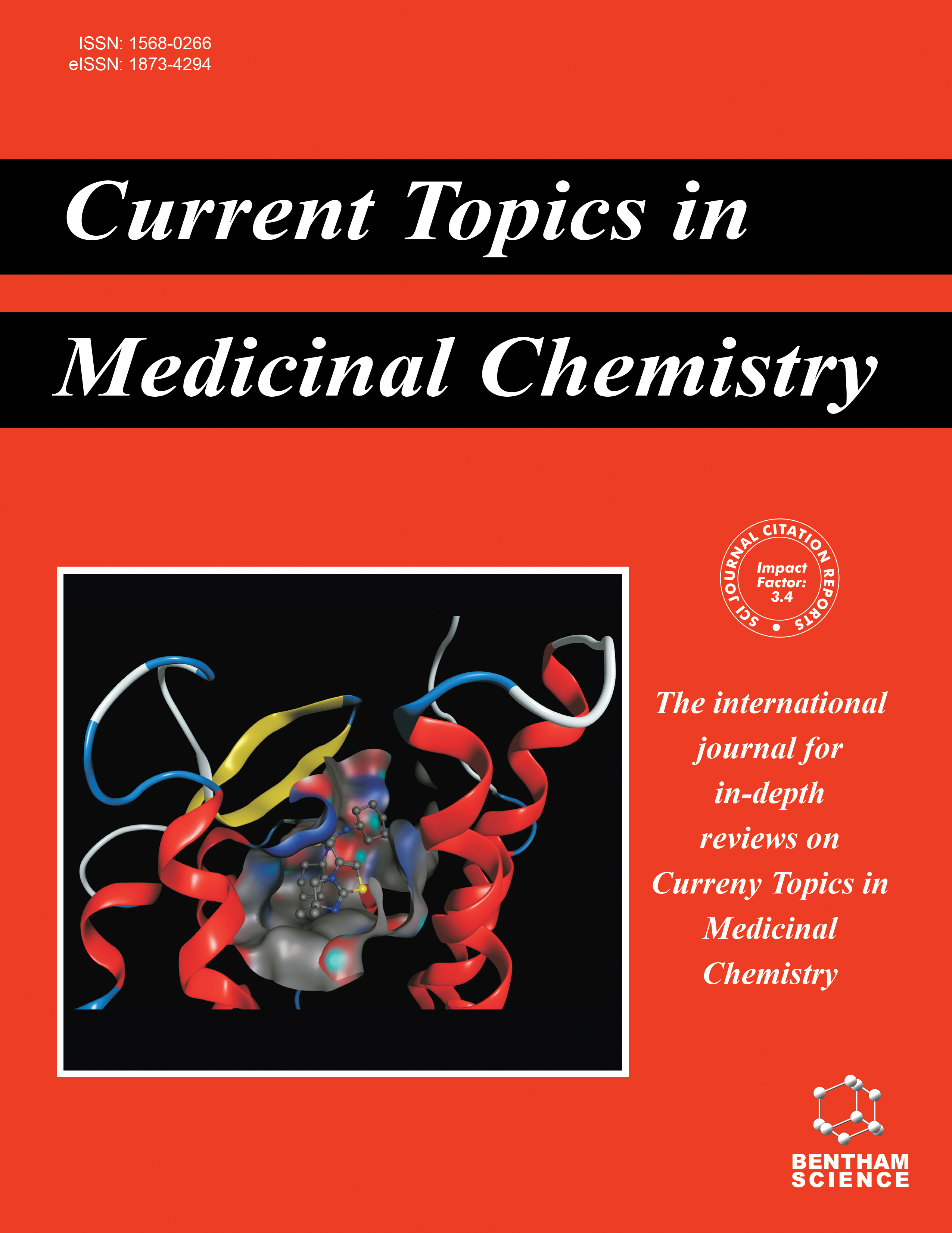- Home
- A-Z Publications
- Current Topics in Medicinal Chemistry
- Previous Issues
- Volume 3, Issue 14, 2003
Current Topics in Medicinal Chemistry - Volume 3, Issue 14, 2003
Volume 3, Issue 14, 2003
-
-
PREFACE [Hot topic: Nuclear Hormone Receptor Modulators as Targets for Drug Discovery (Guest Editor: Timothy Grese)]
More LessOver the last several years, the nuclear hormone receptor superfamily has enjoyed a renaissance as a target of pharmaceutical research. These ligand-gated transcription factors regulate a plethora of biological activities and exert key roles in the pathophysiology of major disease states including diabetes, obesity, osteoporosis, inflammation, atherosclerosis, and congestive heart failure, just to name a few. The utilization Read More
-
-
-
Vitamin D Analogs as Modulators of Vitamin D Receptor Action
More LessAuthors: Sara Peleg and Gary H. PosnerThe natural calcium-regulating hormone 1α,25-dihydroxyvitamin D3 (1,25D3) is a secosteroid that offers organic chemists many sites for modifying structural and / or functional groups. Such modifications alter the chemistry, stereochemistry, and biological properties of the natural hormone. The resulting deltanoids (vitamin D analogs) have been used in the past two decades as molecular probes to investigate structure-functi Read More
-
-
-
Structure-Activity Relationship of Nuclear Receptor-Ligand Interactions
More LessAuthors: Holger Greschik and Dino MorasSmall molecules such as retinoids, steroid hormones, fatty acids, cholesterol metabolites, or xenobiotics are involved in the regulation of numerous physiological and patho-physiological processes by binding to and controlling the activity of members of the nuclear receptor (NR) superfamily of transcription factors. In addition to natural ligands, synthetic agonists or antagonists have been identified that in some cases specifically Read More
-
-
-
Selective Thyroid Hormone Receptor Modulators
More LessAuthors: Hikari A.I. Yoshihara and Thomas S. ScanlanThyroid hormone regulates many important processes in vertebrates. Analysis of the symptoms that accompany hypo- and hyperthyroidism, the most common disorders of the thyroid, suggests that there are certain desirable biological effects brought about by an excess or deficiency of thyroid hormone, and that selective thyroid hormone receptor modulators (STRMs) would be potentially useful therapeutic agents. This r Read More
-
-
-
The Pursuit of Differentiated Ligands for the Glucocorticoid Receptor
More LessAuthors: Michael J. Coghlan, Steven W. Elmore, Philip R. Kym and Michael E. KortGlucocorticoids have a pervasive role in human health and physiology. The endogenous members of this family are involved in a breadth of endocrine functions including metabolism of lipids, carbohydrates and proteins, stress response, fluid and electrolyte balance, as well as maintenance of immunological, renal and skeletal homeostasis. The predominant mode of action of glucocorticoids involves regulation Read More
-
-
-
Orphan Nuclear Receptor Modulators
More LessAuthors: Raju Mohan and Richard A. HeymanNuclear hormone receptors are ligand-activated transcription factors that regulate gene expression and play a critical role in endocrine signaling. Orphan nuclear receptors belong to this gene super-family but their target genes and physiological function have not been completely elucidated. In recent years, the identification of natural ligands for these orphan receptors, their expression pattern in different tissues and studies Read More
-
-
-
PPAR Ligands for Metabolic Disorders
More LessAuthors: Garret J. Etgen and Nathan MantloAs master regulators of lipid metabolism the peroxisome proliferator activated receptor (PPAR) family controls a wide variety of cellular processes, and thus it is not surprising that a large effort has focussed on discovering agents to pharmacologically modulate activity of these receptors. Early generation PPAR ligands, such as the fibrates and the thiazolidinediones (TZDs), were discovered empirically through an in vivo structure Read More
-
-
-
Estrogen Receptor Modulators: Relationships of Ligand Structure, Receptor Affinity and Functional Activity
More LessAuthors: Owen B. Wallace, Timothy I. Richardson and Jeffrey A. DodgeThe estrogen receptor is a regulator of a wide range of physiological functions, including the female reproductive system, in addition to bone, cardiovascular and CNS function. ER ligands have been approved for the treatment of menopausal symptoms, breast cancer and osteoporosis, however the search continues for new modulators of ER function with improved properties. Progress in medicinal chemistry programs h Read More
-
Volumes & issues
-
Volume 25 (2025)
-
Volume 24 (2024)
-
Volume 23 (2023)
-
Volume 22 (2022)
-
Volume 21 (2021)
-
Volume 20 (2020)
-
Volume 19 (2019)
-
Volume 18 (2018)
-
Volume 17 (2017)
-
Volume 16 (2016)
-
Volume 15 (2015)
-
Volume 14 (2014)
-
Volume 13 (2013)
-
Volume 12 (2012)
-
Volume 11 (2011)
-
Volume 10 (2010)
-
Volume 9 (2009)
-
Volume 8 (2008)
-
Volume 7 (2007)
-
Volume 6 (2006)
-
Volume 5 (2005)
-
Volume 4 (2004)
-
Volume 3 (2003)
-
Volume 2 (2002)
-
Volume 1 (2001)
Most Read This Month
Article
content/journals/ctmc
Journal
10
5
false
en


